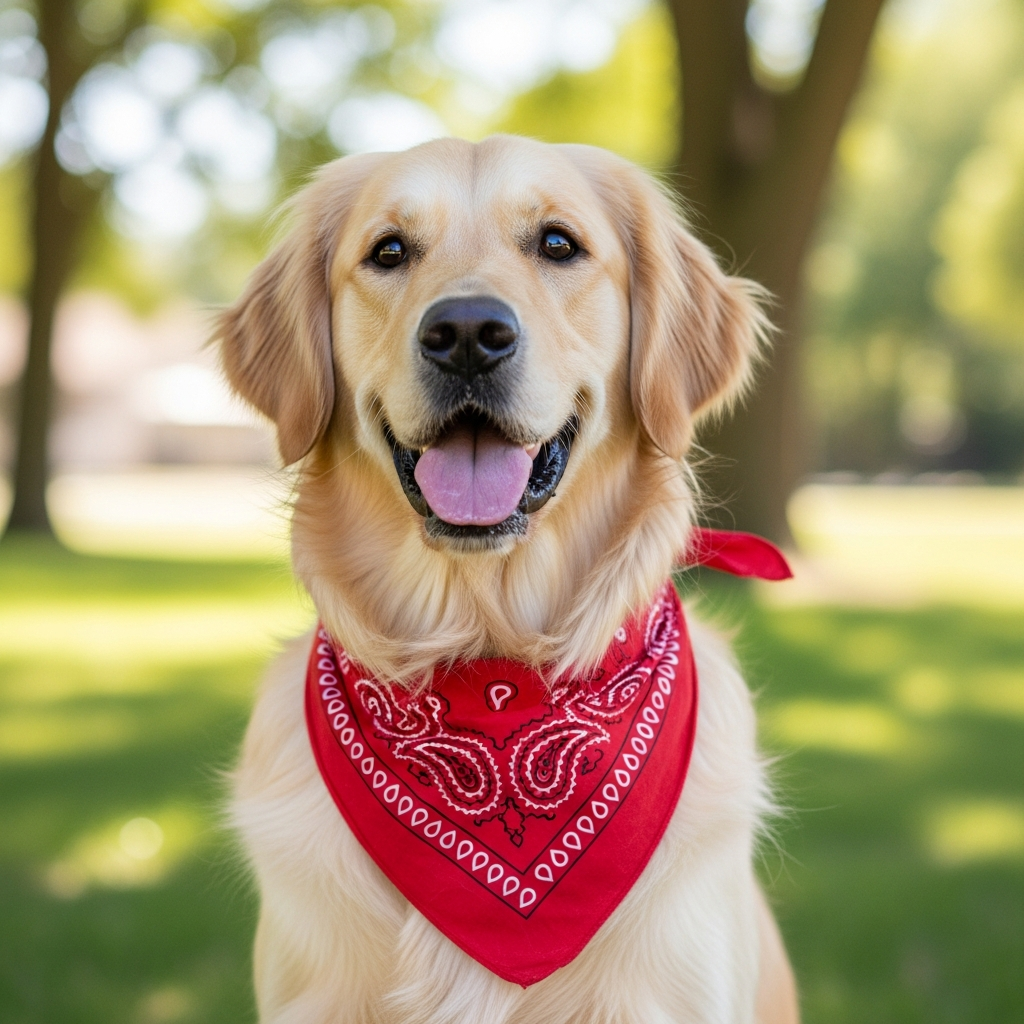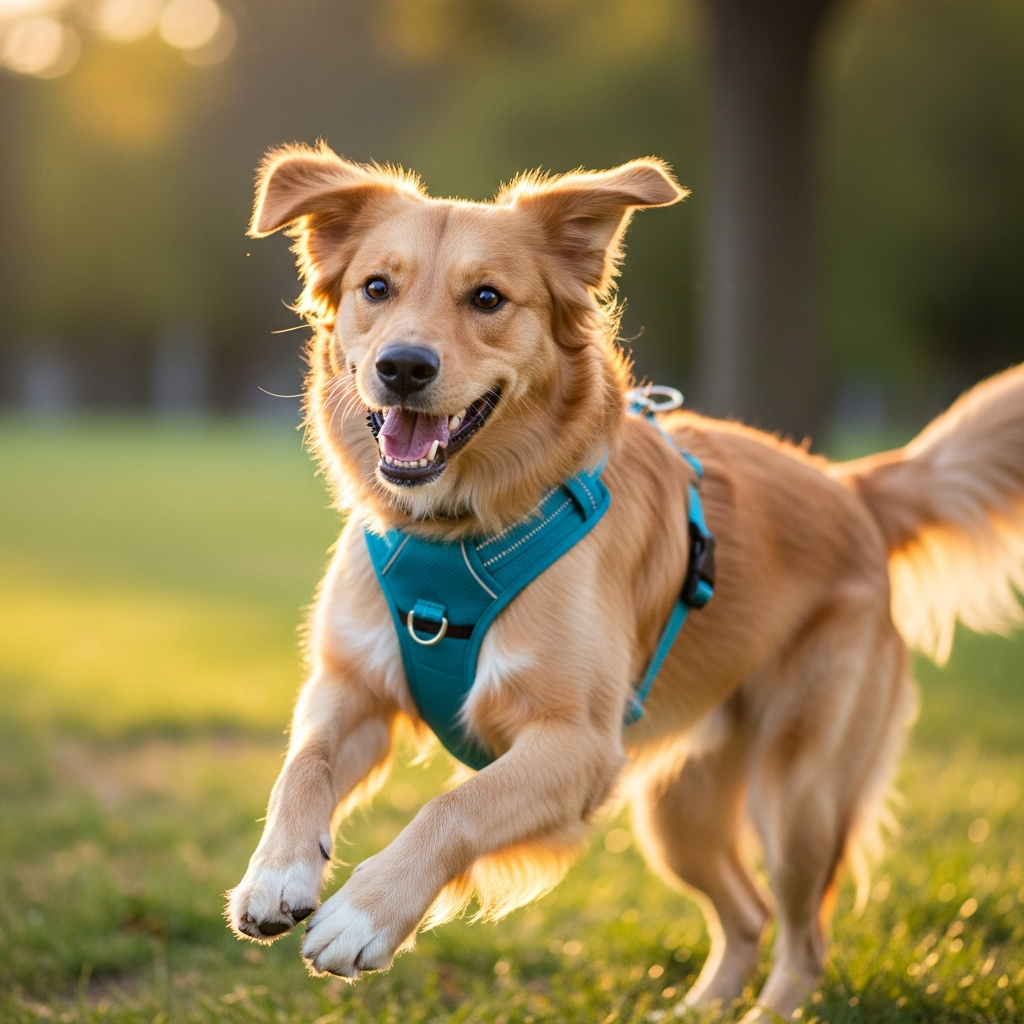Struggling with a dog that pulls? A collar can cause choking and a bad harness can cause chafing. You need a solution that makes walks enjoyable and safe for everyone.
To choose the perfect harness, you must first identify your dog's primary needs, like pulling control or comfort on long hikes. Then, accurately measure their chest girth. Finally, select a harness type and material that matches their size, behavior, and your shared activities.

Choosing a harness can feel overwhelming with so many options available. I've spent years designing dog gear, and my goal is always to merge safety, comfort, and function. It's not just about stopping your dog from pulling; it’s about giving them the freedom to move correctly and comfortably while giving you peace of mind. Let’s break down everything you need to know to make the best choice. This guide will help you understand the key differences in harness types, materials, and fits, so you can confidently pick the one that’s perfect for your best friend.
What are the different types of dog harnesses?
Do you feel like you're in a constant tug-of-war with your dog? The right harness can stop this battle, but the wrong one can actually encourage more pulling.
The main harness types are back-clip, front-clip, and dual-clip. Back-clip harnesses are great for calm dogs. Front-clip harnesses help control pulling by redirecting the dog. Dual-clip harnesses offer the most versatility by having attachment points on both the front and back.

In my design work, the first question I always ask is about the dog's behavior. A harness isn't just an accessory; it's a communication tool. The location of the leash attachment point fundamentally changes how you and your dog interact on a walk. For example, a back-clip harness is easy to put on and works well for dogs that already walk nicely on a leash. However, for a dog that pulls, this design can trigger the "opposition reflex," where they instinctively pull against the pressure. You're essentially giving them a leverage point on their strongest part—their back—to pull you forward. It's a design I recommend for well-trained dogs or very small breeds where pulling isn't a major issue. Many brands start here because it's the simplest design to manufacture.
Harness Functionality Decoded
A front-clip harness, often called a "no-pull" harness, is a smarter choice for heavy pullers. When the dog pulls, the leash attachment on their chest gently redirects their body back toward you. This interrupts their forward motion without causing any pain or choking.
Key Harness Types at a Glance
Here is a simple table I use to explain the core differences to my clients.
| Harness Type | Main Use | Pros | Cons |
|---|---|---|---|
| Back-Clip | Everyday walks, calm dogs | Easy to use, comfortable | Can encourage pulling |
| Front-Clip | Training pullers | Discourages pulling | Can tangle in legs sometimes |
| Dual-Clip | All-purpose, training | Most versatile option | Can be slightly bulkier |
| Y-Shaped | All dogs, especially active | Allows free shoulder movement | Fit is extremely important |
How do you measure a dog for the right harness fit?
Have you ever bought a harness online only to find it's too tight or too loose? An improper fit isn't just uncomfortable; it can lead to chafing or escape.
To measure your dog for a harness, use a soft measuring tape. Measure the circumference of their neck and the widest part of their chest, right behind the front legs. Add two inches to the chest measurement to ensure a snug but comfortable fit.

A perfectly designed harness is useless if it doesn't fit correctly. In my consulting work, I've seen countless product returns simply because the owner guessed the size. A harness that is too tight will restrict movement, dig into the skin, and cause painful sores, especially around the armpits. On the other hand, a harness that is too loose is a major safety hazard. A determined dog can easily back out of a loose harness, which is a terrifying experience for any owner. I always tell brands to include very clear sizing charts and "how to measure" videos with their products. It's the single most important step for customer success. Don't rely on weight or breed alone, as every dog's body is unique.
The "Two-Finger" Rule
Once you've put the harness on your dog, you need to check the fit. The golden rule is the "two-finger" rule. You should be able to comfortably slide two fingers between the harness and your dog's body at any point.
Common Sizing Mistakes to Avoid
Here are some common mistakes I see people make that you should avoid.
- Guessing based on breed: A 60-pound Labrador can have a very different chest size than another 60-pound Labrador. Always measure.
- Not checking all adjustment points: Most harnesses have multiple straps. Make sure you adjust all of them for a balanced fit, not just the chest strap.
- Forgetting about coat thickness: If you have a fluffy dog, make sure the tape measure is snug against their body, not just resting on top of their fur. Consider how their coat changes between seasons.
Which materials are best for a dog harness?
Worried your dog's harness will wear out quickly or irritate their skin? The material of a harness determines its durability, comfort, and how easy it is to clean.
The best materials for dog harnesses are nylon and polyester for their durability and affordability. For dogs with sensitive skin, materials with soft padding like neoprene or breathable mesh are excellent choices. Choose a material based on your dog's activity level and skin sensitivity.

When I'm developing a new product line, material selection is a huge part of the process. We have to balance durability, cost, comfort, and aesthetics. The standard material you'll see everywhere is nylon webbing. It's strong, weather-resistant, and cheap to produce, which is why it's so popular. Polyester is very similar but holds color better and doesn't stretch as much when wet, making it great for dogs who love to swim. However, a simple nylon strap can cause chafing on dogs with short fur or sensitive skin. That’s why you'll often see harnesses with added padding. Neoprene, the same material used in wetsuits, is a fantastic padding choice because it’s soft, water-resistant, and dries quickly.
Material Strength vs. Comfort
There's always a trade-off between rugged durability and soft comfort. A harness made for a mountain-climbing dog needs reinforced stitching and tough, abrasion-resistant fabric. A harness for a city-dwelling Pug needs to be lightweight, breathable, and soft.
Material Comparison Chart
Here's a breakdown of common materials I work with and their main features.
| Material | Key Feature | Best For | Things to Consider |
|---|---|---|---|
| Nylon | Durable & Strong | Most dogs, everyday use | Can cause chafing on some dogs |
| Polyester | Resists water & stretching | Dogs that swim, all-weather use | Less "give" than nylon |
| Mesh | Lightweight & Breathable | Hot weather, small dogs | Not as durable for heavy pullers |
| Neoprene | Soft & Padded | Sensitive skin, active dogs | Can be warmer to wear |
Should you choose a harness based on your dog's activity level?
Does your dog go from sleeping on the couch to sprinting in the park? A standard harness might not be suitable for all the activities you and your dog enjoy together.
Yes, you absolutely should choose a harness based on your dog's activities. A lightweight, breathable mesh harness is ideal for casual city walks. For hiking and running, you need a durable, padded harness with a secure fit and possibly a handle for extra control.

I once worked with a company that wanted to create the "one harness for everything." We quickly realized that's an impossible task. The needs of a dog taking a short walk around the block are completely different from a dog scaling a mountain trail. For active dogs that run, hike, or swim, the design focus shifts to ergonomics and durability. I recommend Y-shaped harnesses for these dogs because they allow for a full range of shoulder motion, preventing any gait restriction or long-term joint issues. The harness should also have reflective trim for visibility and a handle on the back. That handle is incredibly useful for helping your dog over obstacles or for gaining quick control in a tricky situation.
Matching Harness Features to Activities
The key is to think about the primary situations you'll be using the harness in. Don't use a lightweight fashion harness for a rigorous hike; the hardware could fail. Likewise, a heavy-duty tactical harness is overkill and likely uncomfortable for a quick trip to the coffee shop.
Activity and Feature Guide
Here’s how I suggest clients think about matching features to their dog's lifestyle.
| Activity | Recommended Harness Type | Essential Features |
|---|---|---|
| City Walks | Back-clip or Front-clip | Lightweight, easy on/off, stylish |
| Training | Front-clip or Dual-clip | Multiple attachment points, secure fit |
| Hiking/Running | Y-Shaped, Padded Back-clip | Handle, reflective trim, durable materials |
| Car Travel | Crash-tested Harness | Seatbelt loop, reinforced webbing |
Conclusion
Choosing the right harness is about matching the design and material to your dog's unique needs. Get the fit and function right to ensure safe and happy walks together.
Cindy Long is the Sales Manager of Raysunpets and a pet lover with over 12 years of experience in exporting pet products. She specializes in providing customized dog chest carriers, leashes and pet accessory solutions for the European and American markets, always focusing on the real needs of customers and pets, and is committed to creating high-quality, practical and comfortable products that allow fur kids to live happier lives.


